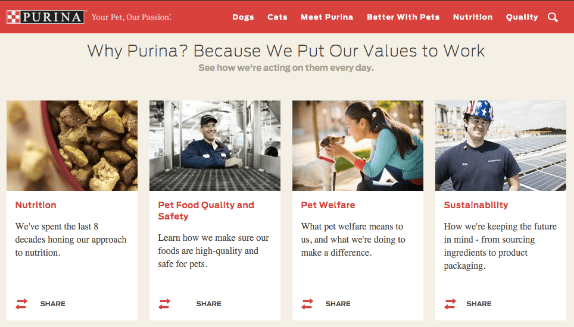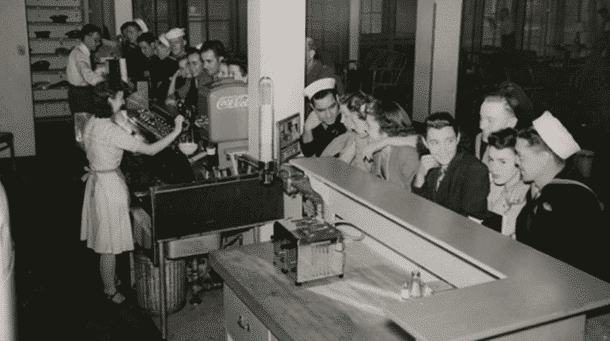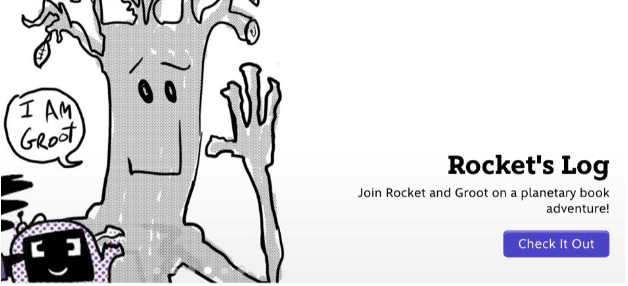- Know the emotions you want to trigger
- Big brands provide examples of how to use emotions the right way
- How to capture readers’ attention with great headlines
- Do you know what maintains reader interest?
- This is the last text a reader sees before converting
- Use heatmaps to measure the success of your content
- Final thoughts
A content writer has to use emotional triggers to gain attention, stoke interest, and push for action. This starts with knowing who your reader is. Once you have established a reader persona, a hypothetical individual to target your writing toward (specific to your audience), it’s time to put your trigger-fingers to work.
Here’s how you can execute content planning in a way that appeals to the emotions of your readers by stimulating specific feelings that lead to actions and generate conversions.

Know the emotions you want to trigger
When writing copy for the web, you have the opportunity to appeal to the entire spectrum of positive and negative emotions. Feelings are what move your readers from clicks to engagement to conversions, but, not just any emotions will work – when it comes to business, the goal is to generate sales. The emotions associated with sales, fortunately, have been studied time and time again.
Because of the extensive research on the topic, it’s easy to find out what emotions to stimulate in order to facilitate conversions. As a matter of fact, it’s become a paradigm in the content writing world, and I’m going to share the top four emotions that generate conversions: They are love, greed, fear, and duty or honor.
Big brands provide examples of how to use emotions the right way
Here are some examples of the four main emotions you want to stimulate as encountered on the websites of Purina, Fidelity, Pfizer, and the United States Army. As you examine the images, pay attention to a) the headlines, b) the descriptive text, and c) the calls to action. Each of the elements is important in the overall experience that these websites facilitate.
1. This is how one brand uses love to sell pet food

Purina pet products’ brand strums readers’ heartstrings with verbiage that stimulates feelings of love and belonging on their website. The tagline, “Your Pet, Our Passion,” shown at the top of the screen on their website gives the impression that the company has true interest in your pet, a beloved member of your family. Not only that, but the about page uses information about nutrition, ingredients quality, pet welfare, and sustainability in production to simulate an experience of belonging with site viewers, and the rest of the world. If you want to understand how to use love to sell your products, Purina is a great brand to learn from.
2. How to promote greed so that readers will invest

Fidelity Investments’ site content facilitates the perception that viewers can save and earn more money with their products. Members can “save” money on other products by registering with Fidelity, and can “achieve more.” The low cost for equity trades is featured right on the home page. Triggering greed is a trusted way to create conversions, and you can learn more by simply perusing successful financial websites.
3. Is there a right way to trigger fear?

Although controversial from a consumer perspective, fear is still a common and reliable emotion for nurturing online conversions. If they don’t use Pfizer’s medicine, it seems readers may go blind or even die – scary! And, this is why Pfizer pharmaceutical products (Advil, Chapstick, Neosporin, and many more) are common in households throughout the world. A brand based on fear can be very successful.
4. Duty and honor come to those who enlist

The U.S. Army is made up of the most dedicated, most respected Soldiers in the world. These Soldiers protect America’s freedoms while serving at home and abroad and they are always prepared to defend the nation in times of need. A U.S. Army Soldier is the embodiment of physical and mental strength. As a Soldier, you will be prepared to serve whenever and wherever you are needed.
If fulfilling one’s duty as part of the strongest force in the world is what a reader is looking for, the United States Army’s website copy reflects just that. Anyone who joins becomes able to, “protect America’s freedoms.” A conversion, in this case, is an enlistment, not a sale, and the website copy helps make this happen. If you want to see examples of content that triggers honor or duty, look first toward military websites.
Each of the above websites uses headlines that capture, descriptive text that maintains interest, and calls to action that convert with the target emotion in mind throughout the copy. This is the recipe for great web content.
How to capture readers’ attention with great headlines
Based on how a conversion is measured to the brand being written for, as stated above, an emotional trigger must first be chosen. Most copywriters use love, greed, fear, or honor and duty. The target emotion should be clear in the headline, while sending a relevant message:

Apple, one of the most well-known brands, uses love as their target emotion and it is very obvious. The headline, “Watch: To wear it is to love it,” even uses the word love in the text. “Better together,” nurtures a sense of belonging while transforming their inventory from a collection to something like a family, which appeals on a subconscious level to the reader. This brand knows how to trigger emotions and their award winning sales reflect that fact.
Do you know what maintains reader interest?
Maintaining the interest of your readers requires more than just supplying information – even very valuable information. In order to captivate readers, once you’ve hooked them with an amazing headline, you need content that informs, provides value, and keeps them wanting to know more. With each sentence, your goal is to leave the reader wanting more and asking thought-provoking questions.

As the U.S. War machine grew during the run up to World War II, so did the need to provide American GIs with a touch of home. Coke was critical to that mission—so critical that the company wasn’t subject to the same sugar rationing as the public. USO
The caption on the photo above, found on Coca Cola’s website, provides a perfect example of copy that leaves a reader wanting to know more. “What was the sugar ration that the public was subject to?” Is the first question that pops into mind. This is a great example of content that builds upon the brand while preserving the interest of the reader.
This is the last text a reader sees before converting
All of the emotional triggering in your content leads up to one final incentive that needs to capture and motivate your reader: the call to action. Expert copywriters and content marketers know that the call to action is the cherry on top of every great web page. Without it, conversions (sales, subscriptions, registrations, enrollments, etc.) simply don’t happen.
You know what you want your readers to do, so using the language of your target emotion, ask them!. For example, if your brand emotion is fear, tell your readers “don’t miss out,” when you want them to subscribe to your mailing list. If it’s love, you can invite them to “join,” instead. Do you feel the difference?
Take a look at some of your competitors’ brand websites and check out their call to action text, then make yours better:

Use heatmaps to measure the success of your content
As you write content, be sure to use a tool like Mouseflow to obtain heatmaps, which adds another dimension to your analysis. For example, you can use a movement heatmap to gauge whether certain pieces of content are attracting users’ eyes (there’s a strong correlation between mouse movement and eye tracking). Next, check your scroll heatmaps to see exactly how many users are able to view your content. If you craft perfect content, but no one is able to see it, it will not be effective.
Finally, saving the best for last, check your attention heatmaps to see which parts of each web page receive the most time viewed. The reason for this is simple: if users spend more time in certain parts of a page, locate your key content there. By using heatmaps, you gain an edge over your competition – you’re not only testing the content but where and how to communicate that content. In the end, this extra effort will make all the difference in the world!
Final thoughts
The first step in using emotional triggers in your content writing is to know the emotion you want to trigger. Some of the most useful emotions for online conversions are love, greed, fear, and honor. You can trigger these emotions in headlines or copy and build upon them while you carry the emotion out to your calls to action. As you test, be sure to measure the effectiveness of your changes using heatmaps. Then, implement any changes you learn about with your next marketing campaign to start writing like a true professional.
Sources:
- https://www.purina.com/meet-purina#/article-navigation
- https://www.fidelity.com/
- https://www.pfizer.com/
- https://www.goarmy.com/about.html
- https://www.apple.com/
- https://www.coca-colacompany.com/sustainability/
- https://disney.com/
This post is by Marry McAleavey, a content marketing manager at Essay Service.

